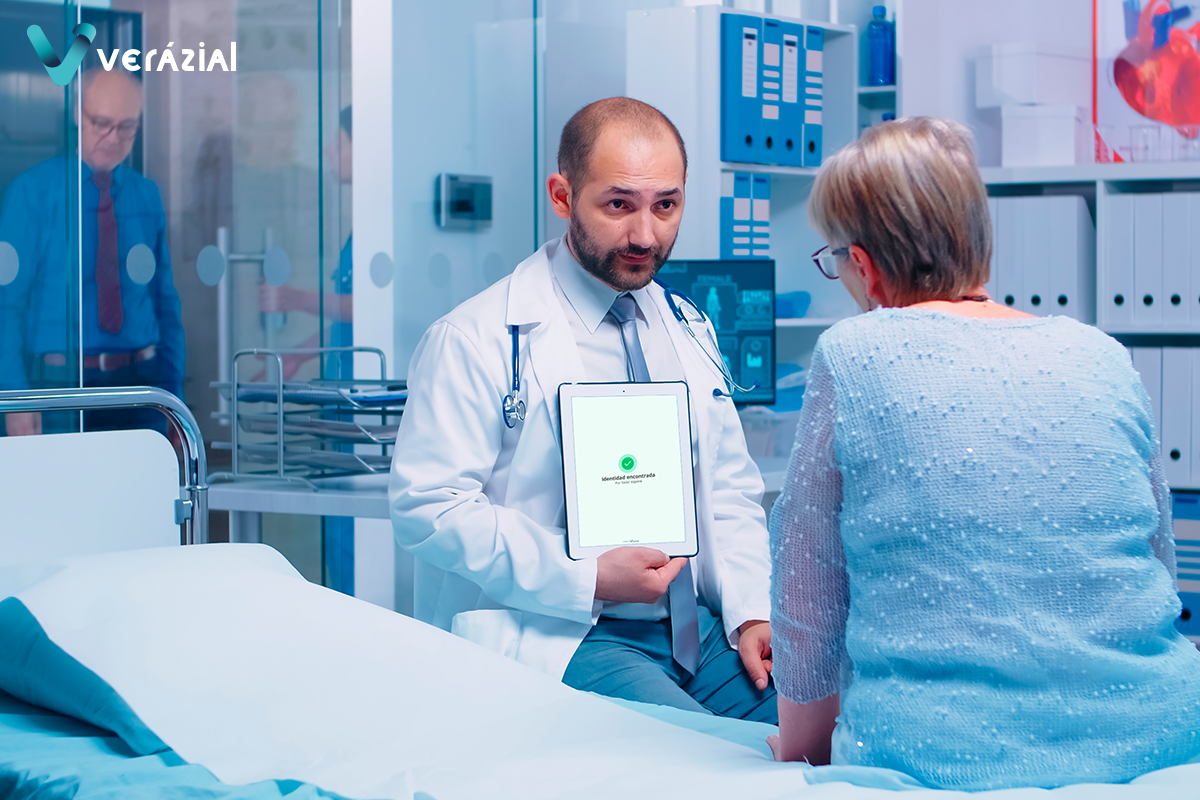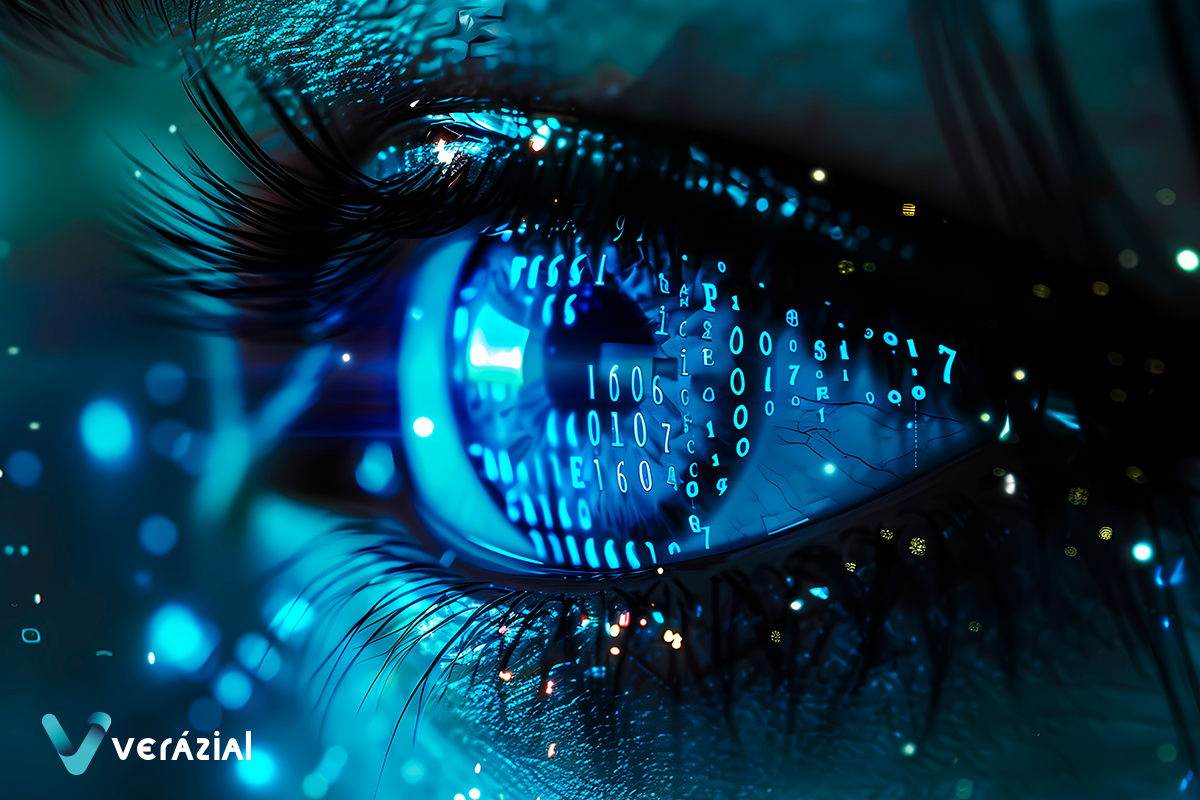Biometric Identification for Accurate Treatment and Access Control in Hospitals
The adoption of biometric technology in hospitals strengthens security protocols through reliable identification of patients and authorized personnel. This helps prevent critical clinical errors, control access to sensitive areas and ensures accurate traceability throughout the care process, guaranteeing patient safety and quality of care.
Ensuring patient safety is a core principle of medical care. It involves minimizing risks and preventing errors that could compromise the health, integrity or well-being of those who rely on healthcare services. Despite advances in digitization, staff training and process standardization, avoidable incidents continue to occur across healthcare systems worldwide.
Among the most severe of these incidents is patient misidentification, which can lead to grave consequences: administering the wrong medication, performing invasive procedures on the wrong person, or granting unauthorized access to critical hospital areas. These failures not only impact the effectiveness of medical treatment and the safety of patients, but also damage the institution’s reputation.
Although many hospitals already use methods such as bar-coded wristbands, patient photos on medical charts, double-check forms or verbal confirmation, these solutions have inherent limitations. They can fail due to wear and tear, misinterpretation, human error or even deliberate manipulation, leaving the door open to impersonation and compromising the traceability of care.
One of the most critical errors is patient misidentification, which can trigger serious consequences: from administering the wrong treatments to performing invasive procedures on the wrong person or allowing unauthorized access to critical areas of the hospital. These failures directly impact the quality of treatment, patient safety and the reputation of institutions.
Although many hospitals have implemented methods such as bar-coded wristbands, photos on medical charts, double-check forms or verbal identification, these solutions have limitations. They can fail due to wear and tear, misinterpretation, human error or even manipulation, leaving open the possibility of impersonation and compromising the traceability of care.
The Serious Consequences of Misidentification
Beyond the well-known consequences—such as patient harm, identity fraud, or financial losses—this article highlights a particularly critical area of risk: when identification failures directly affect the delivery of treatment or the integrity of access control within sensitive hospital environments.
Some of the most frequent risks include:
- Incorrect medication or treatment administration: A misidentified patient may receive the wrong medication or therapy, risking harmful side effects, dangerous interactions, or the omission of necessary treatment.
- Mismatched transfusions: Misassigned transfusions can lead to serious immunological reactions and fatal consequences.
- Inaccurate diagnoses and surgeries: Misassigned medical records can result in inappropriate procedures while delaying essential care for the actual patient in need.
- Unauthorized access to critical areas: Entry into zones like operating rooms, ICUs, or neonatal units without proper clearance can compromise patient safety, disrupt sterile conditions, and interfere with procedures.
- Compromised clinical traceability: Inaccurate identification distorts medical records, hampers the reconstruction of patient history, and may result in legal liability or a loss of institutional credibility.
The Solution: Biometric Patient Identification
Biometric identification offers a major advancement over traditional systems by using unique, non-transferable physical traits—such as fingerprints, facial features, or iris patterns—to verify identity. Unlike conventional methods that depend on external items or human interaction (such as wristbands, forms or verbal identification), biometric technology ensures a higher level of accuracy and automation.
Its application in hospitals enables:
- Accurate identity verification, even when patients are unconscious or in critical condition.
- Elimination of confusion among patients with similar names, especially in fast-paced or high-turnover environments.
- Protection against identity fraud, mitigating legal risks and ensuring healthcare resources are properly allocated.
- Accurately link patients with their medical history, treatments and diagnostic tests, leading to quality of care.
- Improved operational efficiency by enhancing the traceability, security, and automation of clinical and administrative processes.
Beyond Patient Safety: Biometrics for Access Control

In addition to securing patient identity, biometric systems can be used to control access to sensitive hospital areas, reinforcing institutional security and ensuring compliance with healthcare regulations.
High-risk zones such as operating theatres, ICUs, neonatal units, laboratories, blood banks, and radiotherapy rooms require strict, verifiable access control that minimizes the potential for human error. In these environments, correctly identifying both patients and staff is essential for maintaining clinical protocols and avoiding incidents.
Biometric tools—such as iris scanners, fingerprint readers, and facial recognition—allow hospitals to:
- Restrict access to authorized individuals only, whether healthcare providers, technicians, or patients.
- Ensure that treatments and procedures are performed in the correct environment and with the intended patient.
- Maintain sterile environments and prevent cross-contamination in controlled zones.
- Block entry to individuals lacking proper training or credentials, thus reducing operational, regulatory, and legal risks.
These systems can also be integrated with hospital management platforms, automatically logging entries and exits, triggering alerts, and increasing accountability.
Biometrics doesn’t just enhance patient safety—it transforms how hospitals manage access, mitigate human error, and streamline operations. In a healthcare environment where trust, accuracy, and efficiency are paramount, implementing biometric technology is a decisive step toward safer, smarter, and more patient-centered care.
Find out how Verázial ID Health can help you ensure secure patient identification.
Contact us for a demonstration and/or personalized study.
References
- Doctor looking an android device [Freepik]
Biometric Identification for Accurate Treatment and Access Control in Hospitals
The adoption of biometric technology in hospitals strengthens security protocols through reliable identification of patients and authorized personnel. This helps prevent critical clinical errors, control access to sensitive areas and ensures accurate traceability throughout the care process, guaranteeing patient safety and quality of care.
Ensuring patient safety is a core principle of medical care. It involves minimizing risks and preventing errors that could compromise the health, integrity or well-being of those who rely on healthcare services. Despite advances in digitization, staff training and process standardization, avoidable incidents continue to occur across healthcare systems worldwide.
Among the most severe of these incidents is patient misidentification, which can lead to grave consequences: administering the wrong medication, performing invasive procedures on the wrong person, or granting unauthorized access to critical hospital areas. These failures not only impact the effectiveness of medical treatment and the safety of patients, but also damage the institution’s reputation.
Although many hospitals already use methods such as bar-coded wristbands, patient photos on medical charts, double-check forms or verbal confirmation, these solutions have inherent limitations. They can fail due to wear and tear, misinterpretation, human error or even deliberate manipulation, leaving the door open to impersonation and compromising the traceability of care.
One of the most critical errors is patient misidentification, which can trigger serious consequences: from administering the wrong treatments to performing invasive procedures on the wrong person or allowing unauthorized access to critical areas of the hospital. These failures directly impact the quality of treatment, patient safety and the reputation of institutions.
Although many hospitals have implemented methods such as bar-coded wristbands, photos on medical charts, double-check forms or verbal identification, these solutions have limitations. They can fail due to wear and tear, misinterpretation, human error or even manipulation, leaving open the possibility of impersonation and compromising the traceability of care.
The Serious Consequences of Misidentification
Beyond the well-known consequences—such as patient harm, identity fraud, or financial losses—this article highlights a particularly critical area of risk: when identification failures directly affect the delivery of treatment or the integrity of access control within sensitive hospital environments.
Some of the most frequent risks include:
- Incorrect medication or treatment administration: A misidentified patient may receive the wrong medication or therapy, risking harmful side effects, dangerous interactions, or the omission of necessary treatment.
- Mismatched transfusions: Misassigned transfusions can lead to serious immunological reactions and fatal consequences.
- Inaccurate diagnoses and surgeries: Misassigned medical records can result in inappropriate procedures while delaying essential care for the actual patient in need.
- Unauthorized access to critical areas: Entry into zones like operating rooms, ICUs, or neonatal units without proper clearance can compromise patient safety, disrupt sterile conditions, and interfere with procedures.
- Compromised clinical traceability: Inaccurate identification distorts medical records, hampers the reconstruction of patient history, and may result in legal liability or a loss of institutional credibility.
The Solution: Biometric Patient Identification
Biometric identification offers a major advancement over traditional systems by using unique, non-transferable physical traits—such as fingerprints, facial features, or iris patterns—to verify identity. Unlike conventional methods that depend on external items or human interaction (such as wristbands, forms or verbal identification), biometric technology ensures a higher level of accuracy and automation.
Its application in hospitals enables:
- Accurate identity verification, even when patients are unconscious or in critical condition.
- Elimination of confusion among patients with similar names, especially in fast-paced or high-turnover environments.
- Protection against identity fraud, mitigating legal risks and ensuring healthcare resources are properly allocated.
- Accurately link patients with their medical history, treatments and diagnostic tests, leading to quality of care.
- Improved operational efficiency by enhancing the traceability, security, and automation of clinical and administrative processes.
Beyond Patient Safety: Biometrics for Access Control

In addition to securing patient identity, biometric systems can be used to control access to sensitive hospital areas, reinforcing institutional security and ensuring compliance with healthcare regulations.
High-risk zones such as operating theatres, ICUs, neonatal units, laboratories, blood banks, and radiotherapy rooms require strict, verifiable access control that minimizes the potential for human error. In these environments, correctly identifying both patients and staff is essential for maintaining clinical protocols and avoiding incidents.
Biometric tools—such as iris scanners, fingerprint readers, and facial recognition—allow hospitals to:
- Restrict access to authorized individuals only, whether healthcare providers, technicians, or patients.
- Ensure that treatments and procedures are performed in the correct environment and with the intended patient.
- Maintain sterile environments and prevent cross-contamination in controlled zones.
- Block entry to individuals lacking proper training or credentials, thus reducing operational, regulatory, and legal risks.
These systems can also be integrated with hospital management platforms, automatically logging entries and exits, triggering alerts, and increasing accountability.
Biometrics doesn’t just enhance patient safety—it transforms how hospitals manage access, mitigate human error, and streamline operations. In a healthcare environment where trust, accuracy, and efficiency are paramount, implementing biometric technology is a decisive step toward safer, smarter, and more patient-centered care.
Find out how Verázial ID Health can help you ensure secure patient identification.
Contact us for a demonstration and/or personalized study.
References
- Doctor looking an android device [Freepik]
Biometric Identification for Accurate Treatment and Access Control in Hospitals
The adoption of biometric technology in hospitals strengthens security protocols through reliable identification of patients and authorized personnel. This helps prevent critical clinical errors, control access to sensitive areas and ensures accurate traceability throughout the care process, guaranteeing patient safety and quality of care.
Ensuring patient safety is a core principle of medical care. It involves minimizing risks and preventing errors that could compromise the health, integrity or well-being of those who rely on healthcare services. Despite advances in digitization, staff training and process standardization, avoidable incidents continue to occur across healthcare systems worldwide.
Among the most severe of these incidents is patient misidentification, which can lead to grave consequences: administering the wrong medication, performing invasive procedures on the wrong person, or granting unauthorized access to critical hospital areas. These failures not only impact the effectiveness of medical treatment and the safety of patients, but also damage the institution’s reputation.
Although many hospitals already use methods such as bar-coded wristbands, patient photos on medical charts, double-check forms or verbal confirmation, these solutions have inherent limitations. They can fail due to wear and tear, misinterpretation, human error or even deliberate manipulation, leaving the door open to impersonation and compromising the traceability of care.
One of the most critical errors is patient misidentification, which can trigger serious consequences: from administering the wrong treatments to performing invasive procedures on the wrong person or allowing unauthorized access to critical areas of the hospital. These failures directly impact the quality of treatment, patient safety and the reputation of institutions.
Although many hospitals have implemented methods such as bar-coded wristbands, photos on medical charts, double-check forms or verbal identification, these solutions have limitations. They can fail due to wear and tear, misinterpretation, human error or even manipulation, leaving open the possibility of impersonation and compromising the traceability of care.
The Serious Consequences of Misidentification
Beyond the well-known consequences—such as patient harm, identity fraud, or financial losses—this article highlights a particularly critical area of risk: when identification failures directly affect the delivery of treatment or the integrity of access control within sensitive hospital environments.
Some of the most frequent risks include:
- Incorrect medication or treatment administration: A misidentified patient may receive the wrong medication or therapy, risking harmful side effects, dangerous interactions, or the omission of necessary treatment.
- Mismatched transfusions: Misassigned transfusions can lead to serious immunological reactions and fatal consequences.
- Inaccurate diagnoses and surgeries: Misassigned medical records can result in inappropriate procedures while delaying essential care for the actual patient in need.
- Unauthorized access to critical areas: Entry into zones like operating rooms, ICUs, or neonatal units without proper clearance can compromise patient safety, disrupt sterile conditions, and interfere with procedures.
- Compromised clinical traceability: Inaccurate identification distorts medical records, hampers the reconstruction of patient history, and may result in legal liability or a loss of institutional credibility.
The Solution: Biometric Patient Identification
Biometric identification offers a major advancement over traditional systems by using unique, non-transferable physical traits—such as fingerprints, facial features, or iris patterns—to verify identity. Unlike conventional methods that depend on external items or human interaction (such as wristbands, forms or verbal identification), biometric technology ensures a higher level of accuracy and automation.
Its application in hospitals enables:
- Accurate identity verification, even when patients are unconscious or in critical condition.
- Elimination of confusion among patients with similar names, especially in fast-paced or high-turnover environments.
- Protection against identity fraud, mitigating legal risks and ensuring healthcare resources are properly allocated.
- Accurately link patients with their medical history, treatments and diagnostic tests, leading to quality of care.
- Improved operational efficiency by enhancing the traceability, security, and automation of clinical and administrative processes.
Beyond Patient Safety: Biometrics for Access Control

In addition to securing patient identity, biometric systems can be used to control access to sensitive hospital areas, reinforcing institutional security and ensuring compliance with healthcare regulations.
High-risk zones such as operating theatres, ICUs, neonatal units, laboratories, blood banks, and radiotherapy rooms require strict, verifiable access control that minimizes the potential for human error. In these environments, correctly identifying both patients and staff is essential for maintaining clinical protocols and avoiding incidents.
Biometric tools—such as iris scanners, fingerprint readers, and facial recognition—allow hospitals to:
- Restrict access to authorized individuals only, whether healthcare providers, technicians, or patients.
- Ensure that treatments and procedures are performed in the correct environment and with the intended patient.
- Maintain sterile environments and prevent cross-contamination in controlled zones.
- Block entry to individuals lacking proper training or credentials, thus reducing operational, regulatory, and legal risks.
These systems can also be integrated with hospital management platforms, automatically logging entries and exits, triggering alerts, and increasing accountability.
Biometrics doesn’t just enhance patient safety—it transforms how hospitals manage access, mitigate human error, and streamline operations. In a healthcare environment where trust, accuracy, and efficiency are paramount, implementing biometric technology is a decisive step toward safer, smarter, and more patient-centered care.
Find out how Verázial ID Health can help you ensure secure patient identification.
Contact us for a demonstration and/or personalized study.
References
- Doctor looking an android device [Freepik]
You May Also Like
You May Also Like





